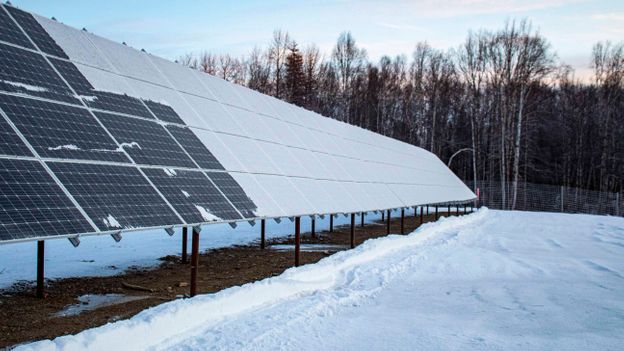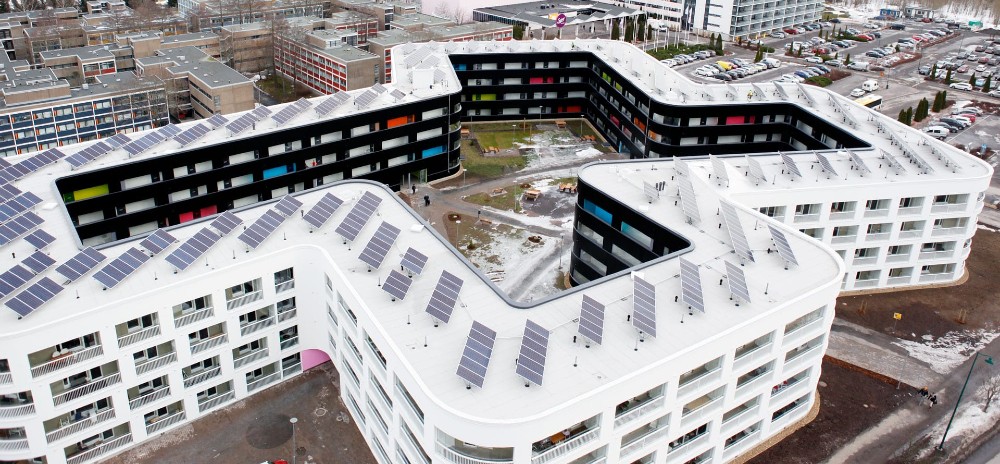Why does power cost more in some areas than others? It gets complicated. Some states have fossil fuels in their backyard, some don’t. PA is sitting on the Marcellus gas fields and previously burned a lot of coal and nuclear. Coal is cheap fossil fuel and with a federally subsidized inland water way system in place, coal is a cheap way to create power. Parts of the south have the federally subsidized TVA system. New England really has little local fossil. The Marcellus field extends up into New York but the state of NY has elected not to allow tapping it.
Alaska is a special case, there is no grid in much of the state, there is minimal gas infrastructure so much of the generation is fossil fuel hauled in from elsewhere as there is no refining capability in the state.
All of the New England states and some of the mid Atlantic are members of the Regional Greenhouse Gas Initiative (RGGI) which effectively put a “carbon tax” on power generation. If you look at the map at this site
https://www.nrdc.org/resources/regional-greenhouse-gas-initiative-model-nation it shows you what states are in it or are joining it. More important it also shows the states who are not in it. RGGI tends to raise the electric rates of RGGI states as they would be hard pressed to burn coal and even gas generation is becoming an issue especially with the carbon free nuclear fleet slowly aging out. As the RGGI targets squeeze to smaller numbers, the state’s end up having to go with more renewables. The Clean Power Plan which was intended to get the US in compliance with various global carbon reduction agreements would have impacted many states, generally the RGGI states didn’t have to do much but coal dependent states were looking at significant investments and increased power costs.
Politicians had a choice in the highest carbon emitting states, they could ignore global warming and get elected or reelected and be long since retired before their grandkids grew up to a seriously climate affected world or they could voluntarily choose to make changes now. The results from the past presidential election tended to show that the states potentially most impacted by Clean Power Plan tended to vote Republican. The republican party ran opposed to the CPP.
There are also some interesting linkages to religious belief and carbon pollution. Areas with large evangelical populations, like the US southeast that subscribe to near term End Times philosophy really could care less about the state the world is in the future as they will have ascended into heaven long before or god will have interceded to cure the problem. For some reason the option of the Noah’s Ark concept of wiping out the population and starting over is not something they figure in. Areas without that philosophy realize that there is only one earth and if mankind elects not to do something about carbon, the world will still be here but it may not be suitable for humans to live here.
Most of the New England states and several other states have gone further and have set renewable portfolio standards that require a certain percentage of power supplied by the utilities be renewable. This is separate from the RGGI market but intertwined. If a utility does not have enough renewable generation, they have to buy renewable credit from other producers. Some state like Mass do a “carve out” of the renewable portfolio to be generated in state. The costs for these programs are usually billed back to the ratepayers as a surcharge on power. Unfortunately, large power users have options, they can move their businesses to states with cheap power or they can generate their own while an individual ratepayer has fewer options. These system benefit charges and RGGI costs are making an ever-larger portion of individual power bills. For folks in Mass, the standard comment about installing solar is you can either pay to have it installed on your house and get paid for generating power or you can pay for your neighbor to.
There is already significant correlation between carbon models and climate. The atmosphere is getting more energy into it and that means more significant weather extremes nationwide. If folks care to irrationally ignore it that’s their prerogative but its hard to argue the point rationally. I expect at some point the US will elect to deal with carbon pollution and then suddenly states with cheap power will suddenly have to raise their rates to put in renewables while the RGGI states will not.
 The cost of groceries was roughly double of what it is in Ohio.
The cost of groceries was roughly double of what it is in Ohio.
 www.bbc.com
www.bbc.com
 The cost of groceries was roughly double of what it is in Ohio.
The cost of groceries was roughly double of what it is in Ohio.


